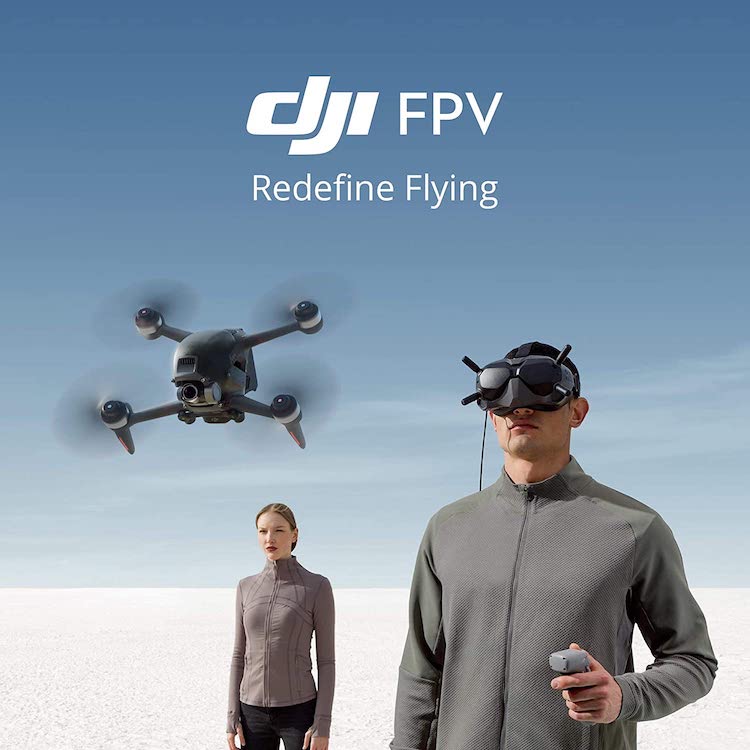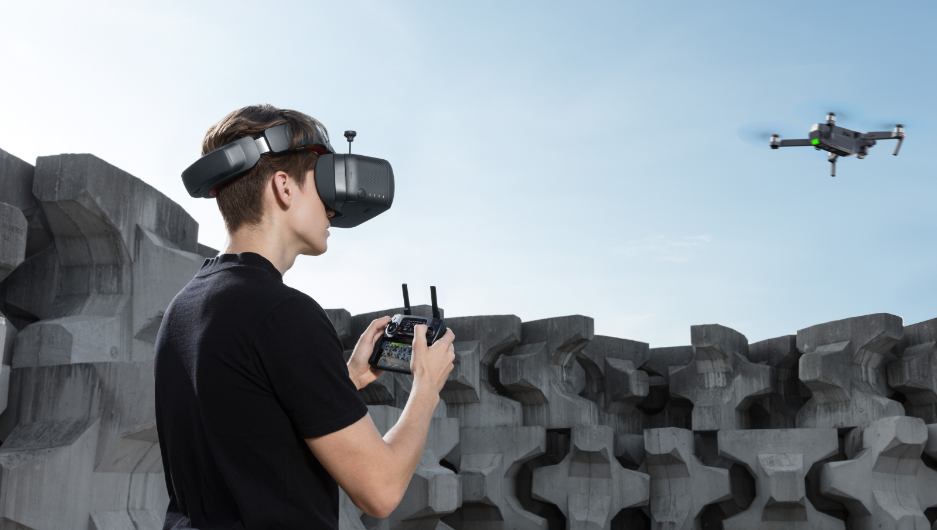
First Person Drone
May 15 2021
Drone introduction has changed the way birds eye view which was a rare phenomenon in films, drones are easy to operate, inexpensive and portable.
Dji first consumer drone release was their DJI Phantom 1 drone in 2013. The Phantom 1 was DJI’s first ready-to-fly drone system that included an internal GPS system for stable, reliable flights which made piloting easier and safer.
DJI has launched the FPV, a hybrid drone that combines the first person perspective, speed and agility of racing drones with the ease of use and integrated camera functionality of consumer drones.
 FPV stands for “first person view.” And while all drones offer a point-of-view from the front of the craft, it’s been up to hobbyists and racers to move that view from the phone or tablet screen to VR-style goggles. But with its new FPV drone, DJI is pulling that experience together in the box. It’s the first ready-to-fly FPV system from the default name in drones, and it promises to make it much easier to experience and shoot fast-action FPV footage.
FPV stands for “first person view.” And while all drones offer a point-of-view from the front of the craft, it’s been up to hobbyists and racers to move that view from the phone or tablet screen to VR-style goggles. But with its new FPV drone, DJI is pulling that experience together in the box. It’s the first ready-to-fly FPV system from the default name in drones, and it promises to make it much easier to experience and shoot fast-action FPV footage.
The DJI FPV includes high performance motors that can take it from a standstill to 100kph in just 2 seconds while reaching a max speed of 140kph. The drone includes three flight modes; the Normal mode, which is designed for novice pilots and allows the drone to hover in place and have obstacle detection. The Manual mode takes the training wheels off and gives full control over the flight, with all sensors and hovering disabled. Lastly, a Sports mode keeps some of the safety features of the Normal mode and manual control of the Manual mode.
 This type of drone the user has a VR type headset Where images are seen.
This type of drone the user has a VR type headset Where images are seen.
There are challenges using this drone…it needs tremendous practice, the wide angle view of the camera means it’s difficult to get a proper idea of your proximity to objects, which can be something of a danger when you’re flying at speeds of up to 87 miles per hour (140 kilometers per hour). I’ve seen amazing FPV videos of people expertly flying through tiny gaps between rocks or trees, but it’s now clear to me that must take hours of practice to get right.
There are sensors that warn if you’re too close to an object, but even so, when you’re skimming over trees at top speed, a split second of missing a warning can be the difference between safely passing a branch or smashing straight into the subject.
Camera SPECFICATIONS
Camera
-
Sensor- 1/2.3” CMOS
Effective pixels: 12 million
-
Lens- FOV: 150°
35mm Format Equivalent: 14.66 mm
Aperture: f/2.8
Focus Mode: Fixed Focus
Focus Range: 0.6 m to ∞
-
ISO 100-12800
-
Shutter Speed 1/50-1/8000 s
-
Still Photography Modes -Single shot
-
VIDEO Max Image Size- 3840×2160
-
Photo Format- JPEG
-
Video Resolution- 4K: 3840×2160 at 50/60fps
FHD: 1920×1080 at 50/60/100/120fps
-
Video Formats- MP4/MOV (H.264/MPEG-4 AVC, H.265/HEVC)
-
Max Video Bitrate-120 Mbps
-
Color Profile- Standard, D-Cinelike
 Dji Max Flight Time is Approx. 20 mins (measured while flying at 40 kph in windless conditions) and hovering time would ne 16mints and Maximum flight distance is 16kms approx.
Dji Max Flight Time is Approx. 20 mins (measured while flying at 40 kph in windless conditions) and hovering time would ne 16mints and Maximum flight distance is 16kms approx.
Video Link https://www.youtube.com/watch?v=PKggf17m4SE
Article compiled by : CJ Rajkumar
Author/Cinematographer
